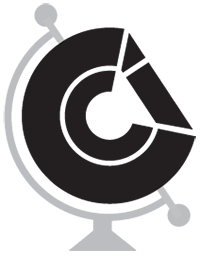Decoding the Impact of NYC's New Building Codes on Cladding Choices
In a continuous effort to bolster fire safety measures, the New York City Fire Code has recently undergone significant updates that pertain to combustible exterior wall coverings. These amendments are specifically tailored to enhance building safety in the unfortunate event of a fire outbreak. The revised regulations encompass a range of critical modifications, from the prohibition of combustible materials in certain areas to the incorporation of new guidelines for fireblocking of exterior wall coverings. This blog post explores the key changes in the code and their potential impact on building design and construction.
What are the NYC Fire Code Updates for Combustible Exterior Wall Coverings?
Restriction of Combustible Materials in Designated Areas - One of the core changes involves the prohibition of combustible materials in or on balconies, as well as walls adjacent to balconies, both vertically and horizontally. This step is crucial in minimizing the risk of fire spread through these vulnerable areas, subsequently enhancing overall building safety.
Limitation on Combustible Outermost Surfaces - The updated code also restricts the use of combustible materials as the outermost surface of an exterior wall covering for retrofitting existing non-sprinklered high-rise buildings. With a few limited exceptions, this measure further reduces the potential fire hazard associated with such materials.
Introduction of Fireblocking Triggers and Locations - The new code introduces prescribed triggers and locations for fireblocking in exterior wall coverings. This addition is aimed at containing fires within specified compartments and limiting their progression. By effectively compartmentalizing fire outbreaks, these fireblocking provisions play a pivotal role in mitigating the impact of fires on buildings.
What Impact Does This Have on Cladding Material Selection?
The changes in the combustible exterior wall coverings code will undoubtedly reshape the landscape of building cladding materials in NYC. Materials such as Exterior Insulation and Finish System (EIFS) and Metal Composite Materials (MCM), once common choices, are now restricted due to their combustible nature in certain applications. Consequently, property owners and developers will need to explore alternative cladding materials that prioritize fire resistance without compromising on aesthetics and functionality.
At Cladding Concepts, we take pride in offering a comprehensive selection of cladding options meticulously curated to align seamlessly with the new and stringent fire code requirements. We understand the critical importance of constructing buildings that prioritize safety without compromising on aesthetics and functionality. Our diverse range of cladding materials has been thoughtfully chosen to cater to various architectural styles and design preferences, all while adhering to the highest standards of fire resistance. Here are some examples of our diverse range of material options:
Terracotta - Our terracotta cladding solutions combine artistic elegance with uncompromising fire safety. With terracotta's inherent non-combustible properties, you can be confident in the durability and resilience of your building's exterior. The earthy tones and versatile designs of our terracotta options allow you to create a visually stunning facade while maintaining compliance with fire codes.
Metal - Metal cladding, available in materials such as steel and aluminum, offers a modern and sleek aesthetic alongside impeccable fire-resistant attributes. Our metal cladding options not only meet the non-combustibility requirement but also provide a high level of structural integrity under intense heat conditions. With an array of finishes and styles, our metal cladding allows you to strike the perfect balance between contemporary design and fire safety.
Natural Stone - Elevate your building's exterior with the timeless beauty of natural stone cladding. Not only does natural stone exude elegance, but it also possesses inherent fire-resistant qualities that align with the new fire code requirements. Our selection of natural stone cladding materials ensures that you can achieve a classic, sophisticated look while prioritizing safety.
GFRC (Glass Fiber Reinforced Concrete) - GFRC cladding offers a harmonious blend of aesthetics and fire resistance. This innovative material combines the strength of concrete with the flexibility of glass fibers, resulting in a lightweight yet durable cladding solution. With GFRC, you can explore creative designs while upholding the fire safety standards mandated by the updated fire code.
Brick - Our brick cladding options pay homage to tradition while embracing modern fire safety standards. Brick, renowned for its fireproofing capabilities and structural integrity, remains a steadfast choice for buildings requiring both aesthetics and resilience. With a variety of textures and colors, our brick cladding options allow you to infuse character into your building's facade. Additionally, a brick rainscreen system offers a fire-resistant solution that aligns well with modern fire codes and regulations. A rainscreen is a cladding system that consists of an outer layer (the visible brick facade) and a ventilated air cavity behind it. This design creates an additional layer of protection against fire by slowing down heat transfer and limiting the potential for fire spread.
Sintered Stone - Sintered stone cladding is a cutting-edge solution that boasts exceptional fire resistance alongside remarkable design versatility. This material is engineered to withstand extreme temperatures, making it a reliable choice for buildings subject to fire code regulations. Our sintered stone cladding options open doors to imaginative designs that prioritize safety.
At Cladding Concepts, we recognize the dynamic landscape of building codes and regulations. Our commitment to providing cladding options that meet and exceed these requirements reflects our dedication to ensuring the safety and well-being of occupants while empowering architects, builders, and designers to realize their creative visions. We have custom solutions for wall systems including rainscreen and fire-insulated sheathing, and we are here to guide you through the process of selecting the perfect solution for your project. Together, we can construct spaces that blend architectural excellence with unwavering fire safety standards.
The Future of Cladding
The recent updates to the NYC Fire Code regarding combustible exterior wall coverings reflect a proactive approach to building safety. The changes, particularly the restrictions on combustible materials in critical areas and the new fireblocking provisions, represent a significant stride towards minimizing fire-related risks. As these regulations come into effect, it is imperative for building owners, architects, and developers to carefully consider the implications for their projects. The emphasis on fire-resistant cladding materials not only ensures compliance with the updated code but also prioritizes the safety of occupants and the resilience of the urban landscape as a whole. Before embarking on construction or renovation projects, consulting with fire protection engineers is recommended to ensure full adherence to the latest code requirements and to create a safer built environment for all. See all of our façade systems here.



